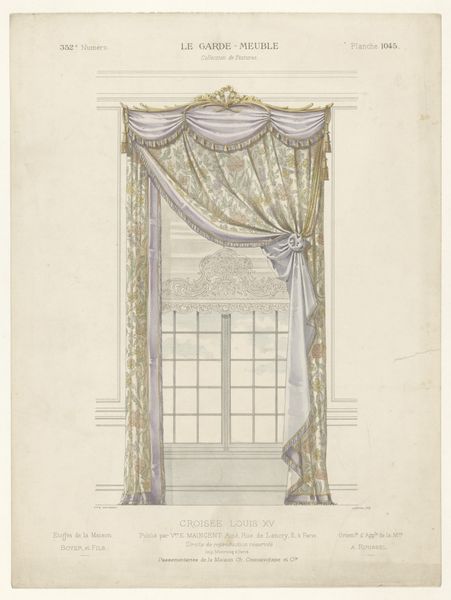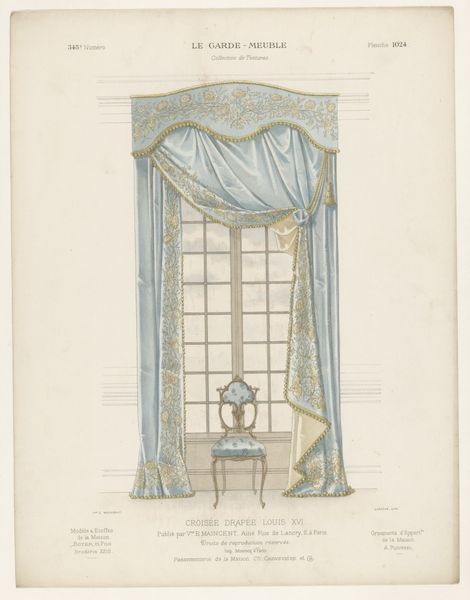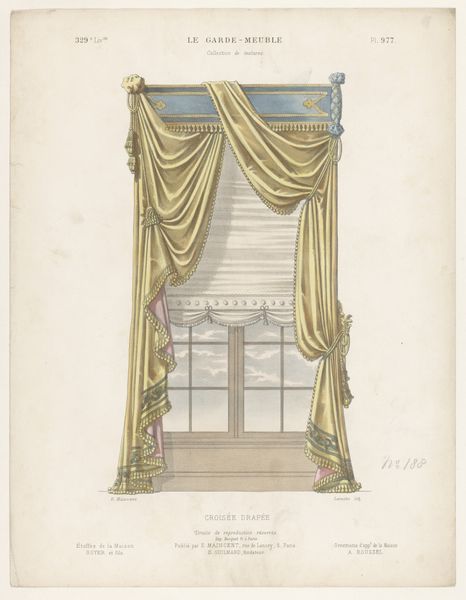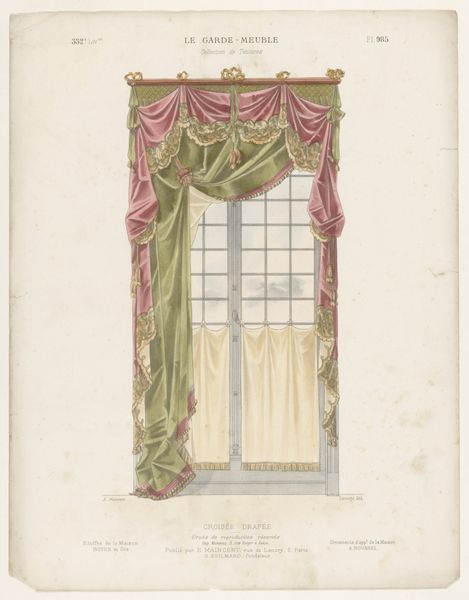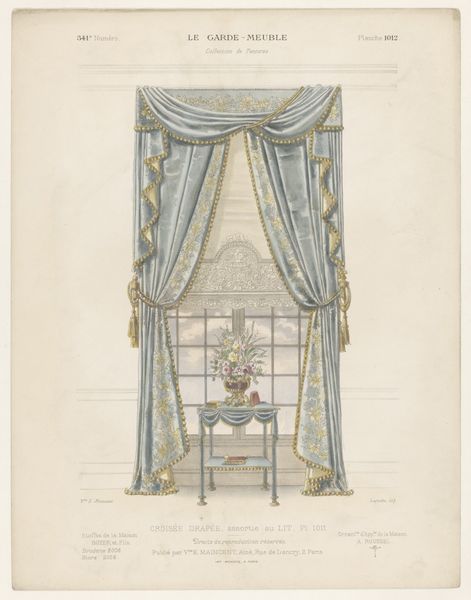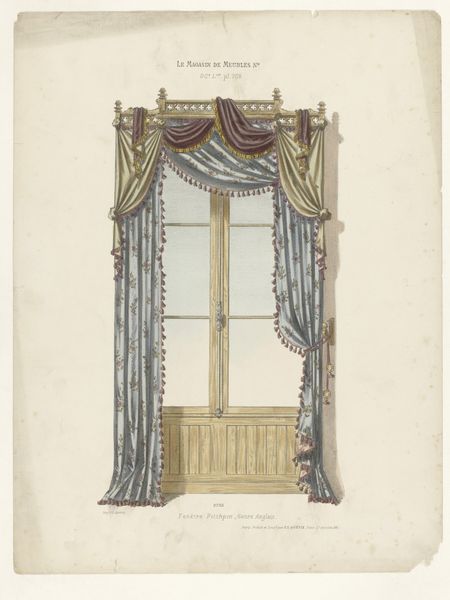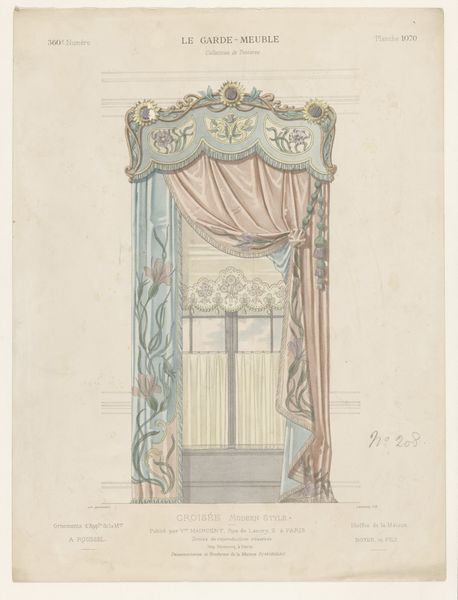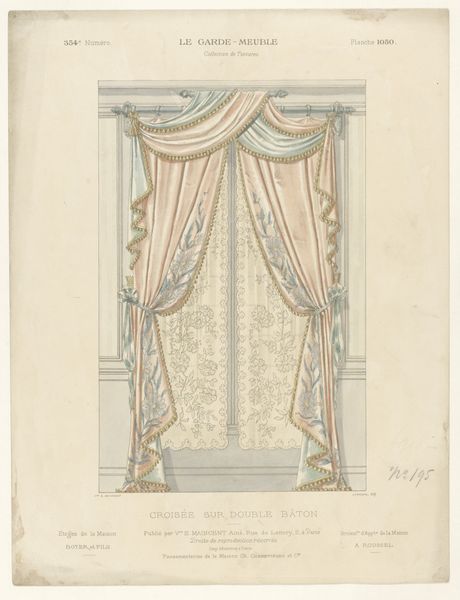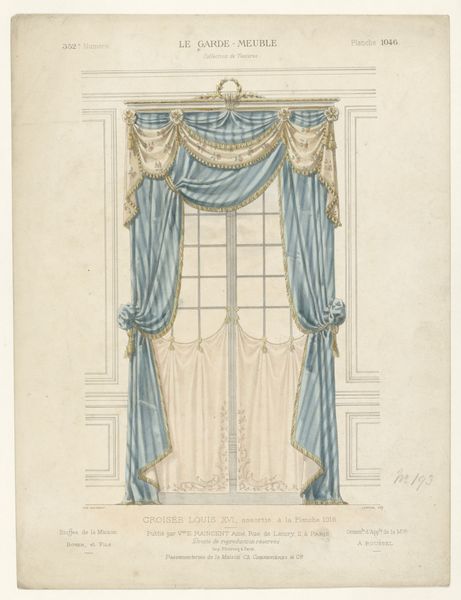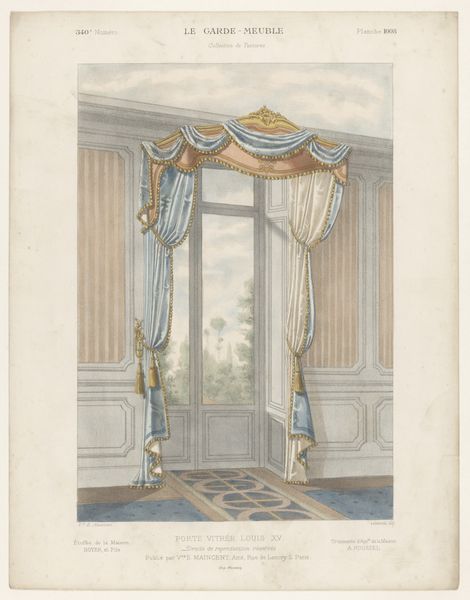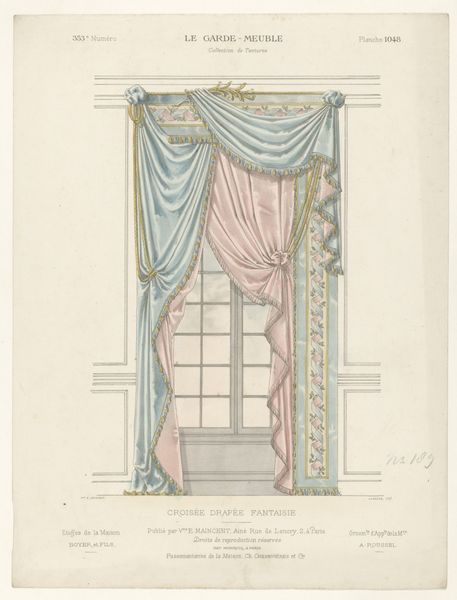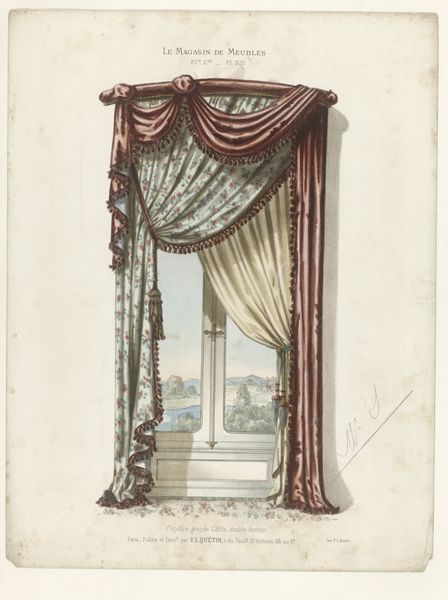
Dimensions: height 360 mm, width 277 mm
Copyright: Rijks Museum: Open Domain
Curator: Here we have a drawing and engraving from circa 1895-1910, by Léon Laroche titled “Venster met gordijnen," or "Window with Curtains.” Editor: Oh, those curtains certainly command attention! There’s something undeniably decadent and even slightly theatrical about the composition with all of that opulent drapery and ornamentation. Curator: Indeed. Laroche’s rendering beautifully captures the essence of Rococo design within a late 19th-century context. The artist showcases an elaborate window treatment— a confluence of line, shape, and symmetry creating a highly formalized scene. The composition relies on very crisp, decorative line work, calling our attention to the shapes made of light and shadow. Editor: From a social perspective, these sorts of prints offer a fascinating glimpse into the domestic lives of the upper classes at the time. A highly decorated room like that projects status and taste. It makes you wonder about the relationship between consumer culture and social identity then and now. Curator: Precisely. These design studies would have served as blueprints of a sort. Laroche presents a kind of aspirational architecture; one of elaborate material splendor, full of implied texture. This isn’t simply representation but a prescriptive visual code meant to communicate certain aesthetic values. Note the light filtering, a suggestion of the outdoors, yet always filtered and framed through cultural ideals. Editor: Yes, the print really highlights how even something as ostensibly simple as a window dressing becomes a statement of cultural power, subtly reinforcing social hierarchies. I mean, those floral designs within the print alone probably took artisans hours. It suggests a system where people have a lot of free time. Curator: Absolutely. I am reminded of that tension that always exists when art is meant to be didactic: how can an artist portray a scene in such a way that promotes cultural codes through seemingly accessible artistry? Editor: That’s a crucial question. Viewing the piece today, one cannot ignore those embedded socioeconomic dimensions; the sheer privilege radiates! It gives us, hopefully, a means of thinking through our values. Curator: Looking at it again through the perspective of visual harmony alone, there is an impressive balance in detail across all elements within the illustrated frame. Editor: And to view the past through artifacts like these, beyond any purely aesthetic appraisal, helps one examine critically where we stand now.
Comments
No comments
Be the first to comment and join the conversation on the ultimate creative platform.
